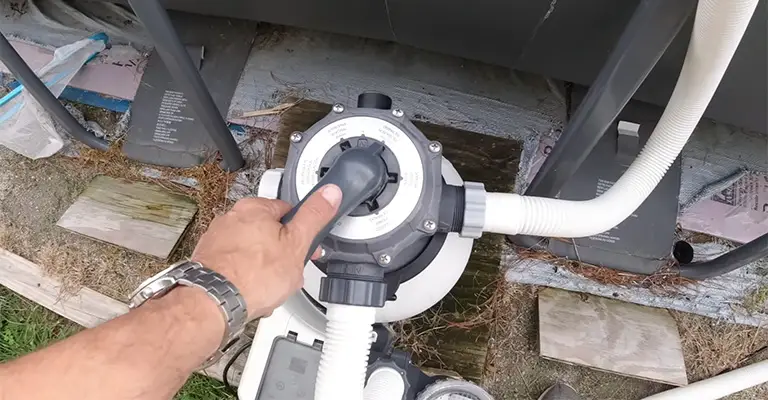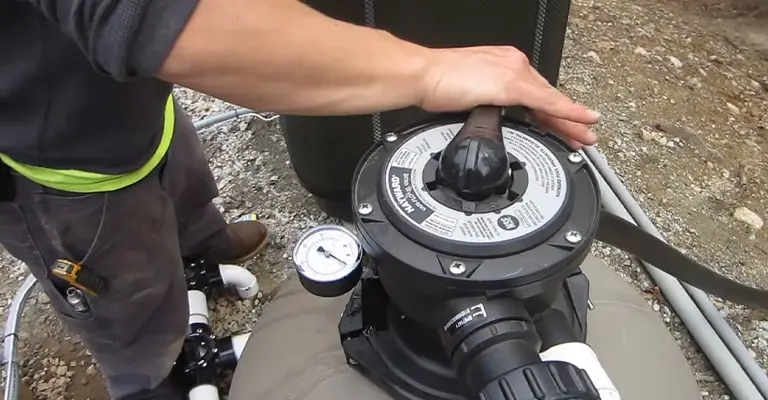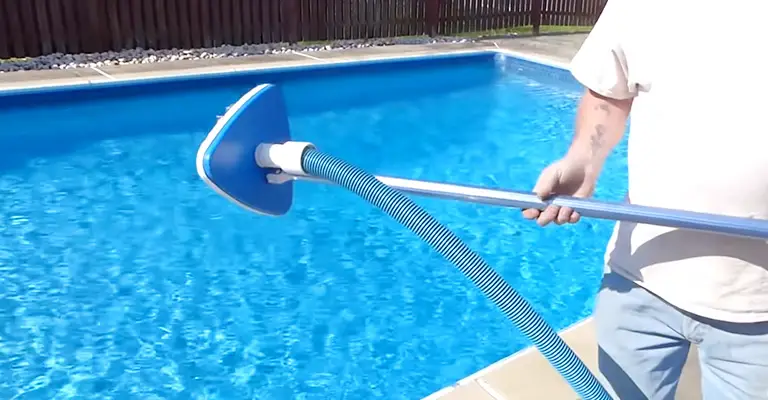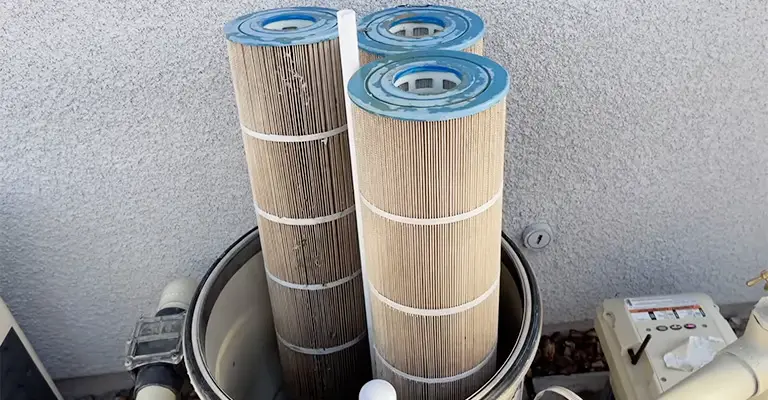Taking care of your pool properly will ensure it lasts for a long time and ensure you don’t have to remodel it. Before and after backwashing, you should clear cloudy pool water.
Almost every pool owner wonders how often they should backwash their pool. The best way to keep your pool clean and your filtration system functioning correctly is to perform regular backwashes.
It is recommended that you backwash your pool after vacuuming it every week as part of your weekly pool maintenance. If your filter is regularly used, it should be backwashed once every 4-6 weeks.
It may be necessary to backwash your pool more frequently if you have accumulated a lot of debris or other contaminants.
Heavy rains, birds, trees, and trees can cause your pool to need more frequent backwashing.
Check out the rest of this article to learn more about backwashing, how often you should perform it, and how to do so.
How Often Should You Backwash Your Pool?

Swimming pools receive a lot of use, and the type of filtration system and their location determine the frequency of backwashing. The requirement for backwashing your pool is likely to increase if trees or shrubs surround it.
The general rule is that you should backwash your pool at least once a week or whenever routine maintenance is scheduled.
It is also industry standard to backwash the filter after its pressure gauge reads 8-10 PSI (pounds per square inch) higher than its starting pressure or “clean” level.
In the case of a filter that usually runs at 15 PSI but increases to 25 PSI after a backwash, for example, you should perform one.
Backwash after a severe storm or if an algae outbreak develops in your area is also a good idea. During the fall season, you might also want to schedule a backwash if you have deciduous trees nearby.
At least six times a year, diatomaceous earth (DE) filter systems need to be disassembled and cleaned. It is necessary to clean sand filters twice a year and tear them down once a year.
What Exactly Is Backwashing?

Water through your filter system is reversed during backwashing, which is a filter-cleaning method.
Although most pool filters assist in removing organic material by circulating water through a porous medium, such as sand, and returning the clean water to the pool, over time, larger particles accumulate in them.
Increasing pressure can decrease the efficiency of your filter and even damage it. Backwashing removes trapped debris and contaminants from your pool, flushing them through your pool’s waste line or a hose connected to the pump.
It is much easier to flow water into and out of the system when the filter media is clean because it lowers the pressure gauge.
Filters and Backwashing

To keep your pool clean, you must ensure that the filter is the appropriate size and is regularly cleaned.
So, what is the most effective type of filter? One you’ll most likely keep clean. It is often challenging to maintain cartridge filters, which is why they are popular. If you have a pool of any size, choose a filter that will fit it.
Backwashing should be considered a temporary solution if a complete teardown and cleaning aren’t possible.
If you backwash your sand filter, it will work well. It prevents errors resulting in a dirty pool since no DE needs to be added.
How To Backwash A Pool’s Filter

Whether you want to do the backwashing yourself or hire a maintenance company, backwashing can be quickly done.
Backwashing a DE filter can be accomplished in the following ways:
- Be sure to turn off your pool’s pump and filtration system.
- Put the filter value to BACKWASH and make sure the handle is securely locked. The water will flow through the view glass as soon as you turn on the pump.
- When the filter view glass is transparent, turn it off.
- If you want to remove DE, you can alternate between backwashing and rinsing. It is essential to turn off the pump when changing the value settings.
- Trash can be disposed of with DE.
- When the pump is not running, disassemble the filter. For this, you may need to change the settings on the timer.
- Ensure the filter is drained by opening the release valve. If you want to remove water more thoroughly, remove the drain plug from the bottom of the filter. A drainage tube will be installed at the bottom of the tank to drain the water.
Here are the steps you should follow if you want to backwash a sand filter on your own:
- Disconnect the pump and filtration system from your pool.
- You must clamp the backwash hose into your water outlet.
- Ensure the filter value is BACKWASH, and the handle is secured. You will see water flowing from the hose or equipment as you look through the view glass.
- If the water still appears murky, wait a few minutes until it clears.
- Immediately turn off the pump to stop backwashing.
- You should lock in the handle of the filter valve by turning it to the RINSE position.
- Let the rinse process run for one minute or until the water becomes clear.
- Stop the pump.
- Ensure the skimmer valve is closed to prevent water from entering the filter.
- After emptying, You need to clean your skimmer basket and hair catcher. Reposition them in the correct position.
- Ensure the skimmer values are open and the Filter Valve is set to filter. Restart the pump once the handle is secured in place.
When You Shouldn’t Backwash
When it comes to cleaning clogged filters, backwashing is an excellent method, but sometimes the procedure should be avoided.
For pools with algae issues, it is recommended to bypass your filter entirely and vacuum straight to waste. Live algae can easily pass through your filter medium and re-enter your pool.
It’s also recommended to vacuum directly into the water if your pool has been exposed to an unusual amount of debris. For example, a neighbor may be built nearby, or the streets nearby may be under construction.
Backwashing Tips
You should inspect all your parts as you reassemble your filter system after backwashing, including the cartridges, grids, and laterals. It’s important not to rush the reassembly since almost all filter leaks occur during this process.
To prevent leaks on your backwash valve, we recommend that you teardown the valve and lubricate it.
In addition to debris and dirt, you’ll inevitably wash away some sand during the backwash. In this case, you must top up the filter’s sand.
When you top up your swimming pool, run your filter system on the rinse setting for at least a minute to minimize the amount of sand blowback into the pool.
Loss of water can result from backwashing. While water loss during the backwashing process cannot be avoided, you can minimize it by not overdoing it. If the water becomes clear, stop once you have seen it through the view glass.
You must always turn off your pup when running a backwash or resetting the filter valve. Missing this step may lead to your system being damaged or completely destroyed, making it a costly mistake.
Final Words
Preventive maintenance and maintenance are vital components. To prevent leaks from arising, do a teardown and lubrication of the backwash valves whenever they become difficult to turn.
Whenever you break down a filter for cleaning, take care to inspect grids, laterals, cartridges, and manifolds as well. Reassembling filters after cleaning shouldn’t be rushed; cleaning often leads to sloppy and careless reassembly.








